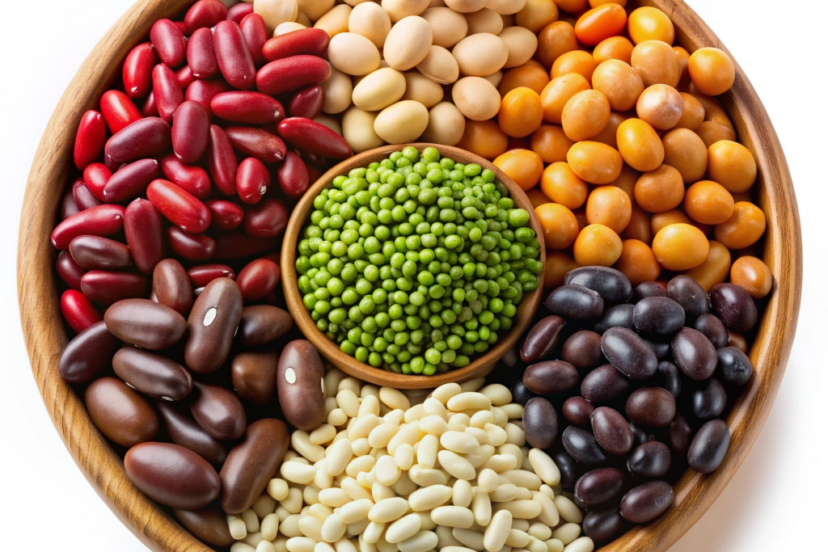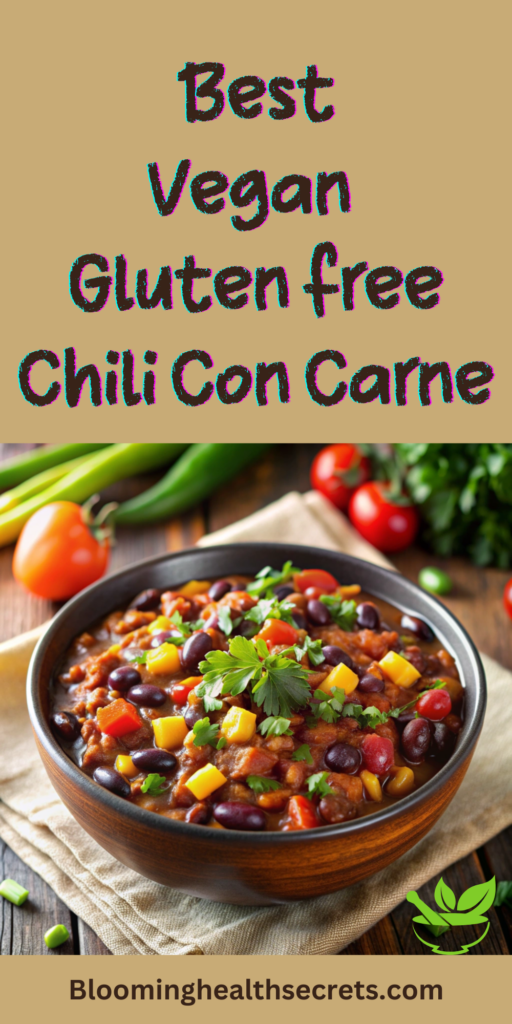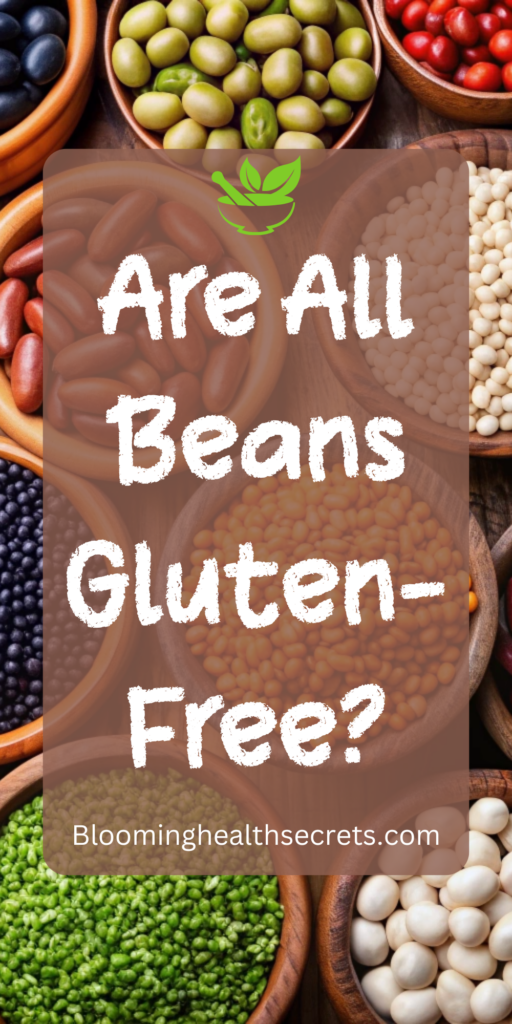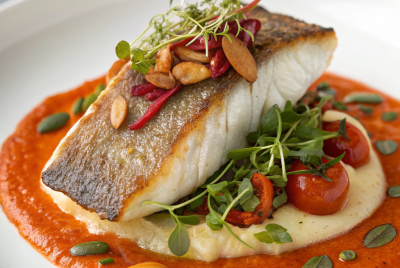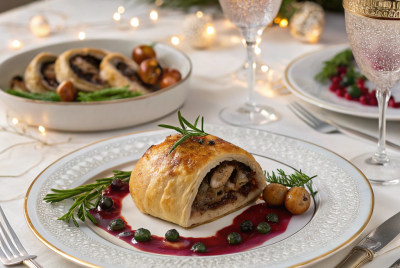Are All Beans Gluten-Free? What You Need to Know
Beans are a staple in many diets worldwide, celebrated for their versatility, nutritional value, and delicious taste. But for those of us navigating the world of gluten-free eating, a common question arises: Are beans gluten-free? Whether you’re managing celiac disease, non-celiac gluten sensitivity, or just exploring a gluten-free lifestyle, it’s crucial to know which foods are safe. Let’s dive into the world of beans, their gluten content, and what you need to know to enjoy these nutritious foods without worry.
What is Gluten and Why Does it Matter?
Before we delve into the beans themselves, let’s briefly talk about gluten. Gluten is a protein found in certain grains, including wheat, barley, and rye. For people with celiac disease, ingesting gluten triggers an immune response that damages the small intestine, leading to various digestive issues and other health problems. Non-celiac gluten sensitivity and wheat allergy also cause adverse reactions, making it necessary to avoid gluten-containing foods.
Understanding the Types of Beans and Their Gluten Content
Now, let’s get to the heart of the matter: Are beans gluten-free? The short answer is yes, in their natural form, beans are gluten-free. This includes popular varieties like black beans, kidney beans, pinto beans, garbanzo beans, navy beans, white beans, green beans, black-eyed peas, and cannellini beans. These beans are a fantastic source of plant-based protein and dietary fiber, making them an excellent addition to any diet.
The Importance of Gluten-Free Labels and Certified Gluten-Free Products
When shopping for beans, especially canned beans or bean products, it’s crucial to check the ingredient list and look for a gluten-free label. Some processed beans may contain gluten-containing additives or be cross-contaminated during the manufacturing process. Brands like Eden Foods and Westbrae Natural offer certified gluten-free beans, ensuring they meet strict gluten-free standards.
Beans and Gluten-Containing Ingredients: What to Watch Out For
While beans themselves are gluten-free, the preparation can sometimes introduce gluten. For instance, soy sauce, which often contains wheat, is a common ingredient in many bean dishes. Always opt for gluten-free alternatives, like tamari, to avoid gluten. Additionally, some baked bean recipes might include ingredients like barley malt or malt vinegar, both of which contain gluten. Always double-check the ingredient list or prepare your own dishes to ensure they’re gluten-free.
Exploring Gluten-Free Varieties: Beyond Traditional Beans
Beyond the traditional beans we know and love, there’s a wide variety of bean-based products available. Bean flour, made from ground dried beans, is a great option for gluten-free baking and cooking. It offers a boost of protein and fiber, perfect for those following a strict gluten-free diet. Brands like Omena Organics offer various gluten-free bean flours, including mung beans and garbanzo beans.
Navigating the Gluten-Free Lifestyle: Tips and Tricks
Living a gluten-free lifestyle doesn’t mean you have to give up your favorite foods. It’s all about making informed choices and finding gluten-free alternatives. When dining out or shopping for groceries, always inquire about the preparation process and check food labels for any gluten-containing ingredients. It’s also a good idea to stick with whole foods like fresh fruits, vegetables, and meats, which are naturally gluten-free.
A Personal Story: My Journey with Beans and Gluten-Free Living
My friend and now flat mate Sarah has gluten sensitivity. As I’m the one to cook most of the time, beans have been our go-to gluten-free protein source, more so since I’m on a plant-based diet. Instead of feeling overwhelmed by the number of foods I had to eliminate when planning meals, I’ve been resorting to beans. And this has been so easy with so many varieties available! From hearty chili with kidney beans to creamy bean dip made with white beans, I’ve found countless ways to enjoy these versatile legumes. One of my all-time favorite recipes is a simple yet delicious Chili Con Carne. This hearty dish is packed with flavor, plant-based protein, and is perfect for a cozy meal. So, I’m thrilled to share this recipe with you.
Vegan Gluten-Free Chili Con Carne Recipe
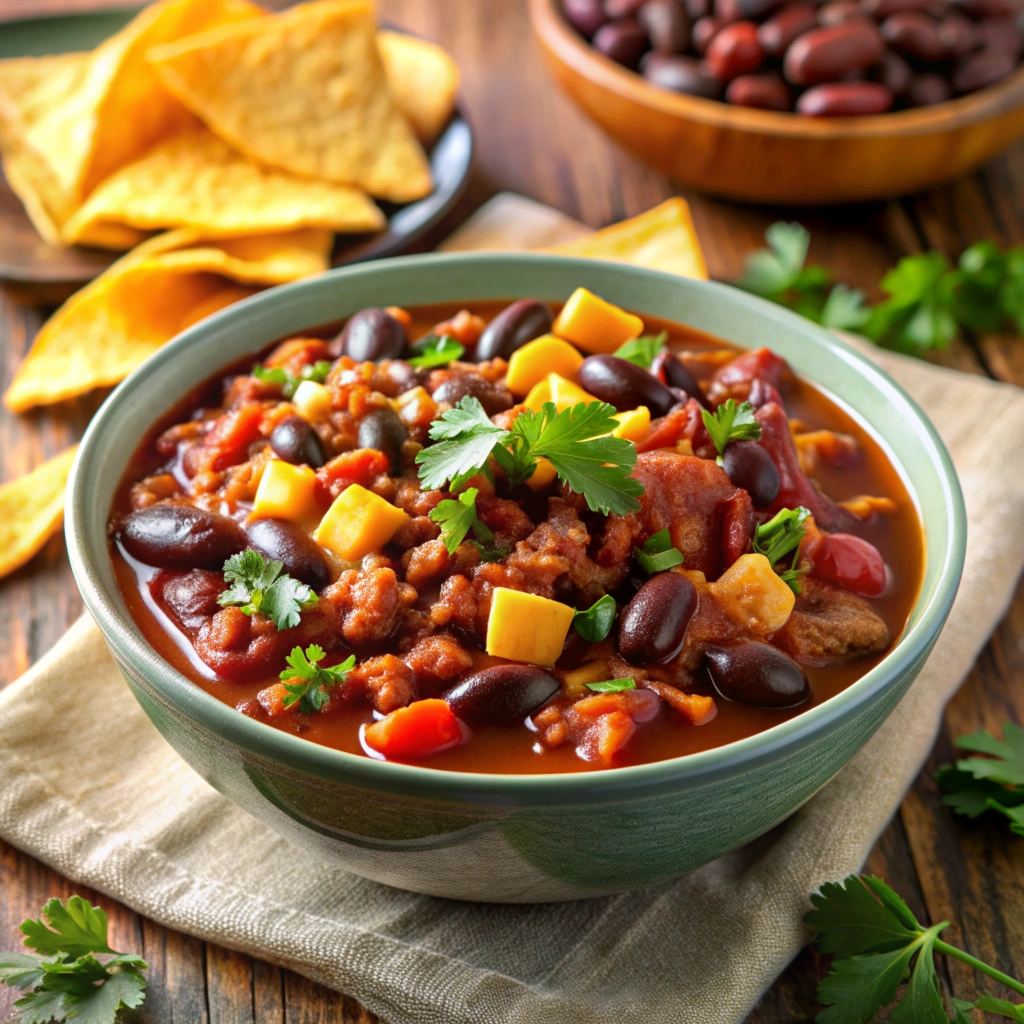
Ingredients:
- 1 tbsp olive oil
- 1 large onion, diced
- 3 cloves garlic, minced
- 1 bell pepper, diced (any color)
- 1 medium carrot, diced
- 1 celery stalk, diced
- 1 can black beans, drained and rinsed
- 1 can kidney beans, drained and rinsed
- 1 can pinto beans, drained and rinsed
- 1 can diced tomatoes (14.5 oz)
- 1 cup vegetable broth
- 1 tbsp tomato paste
- 2 tsp chili powder (adjust to taste)
- 1 tsp ground cumin
- 1 tsp smoked paprika
- 1/2 tsp dried oregano
- 1/2 tsp ground coriander
- 1/4 tsp cayenne pepper (optional, for extra heat)
- Salt and black pepper, to taste
- 1 cup frozen corn kernels
- 1 tbsp maple syrup (optional, for a touch of sweetness)
- 1 tbsp apple cider vinegar (or juice of 1 lime)
- Fresh cilantro, chopped (for garnish)
- Avocado slices (optional, for garnish)
- Gluten-free tortilla chips (optional, for serving)
Instructions:
1. Prepare the Base:
- Heat the olive oil in a large pot over medium heat. Add the diced onion and sauté for about 5 minutes, until translucent.
- Add the minced garlic, bell pepper, carrot, and celery. Sauté for another 5-7 minutes, until the vegetables are softened.
2. Add the Beans and Tomatoes:
- Stir in the black beans, kidney beans, pinto beans, and canned diced tomatoes. Mix well.
3. Add the Liquids and Spices:
- Pour in the vegetable broth and add the tomato paste. Stir to combine.
- Add the chili powder, ground cumin, smoked paprika, dried oregano, ground coriander, cayenne pepper (if using), salt, and black pepper. Mix everything together thoroughly.
4. Simmer the Chili:
- Bring the mixture to a boil, then reduce the heat to low. Cover and let the chili simmer for 30-40 minutes, stirring occasionally. This allows the flavors to meld together.
5. Add the Final Touches:
- About 10 minutes before the chili is done, stir in the frozen corn kernels and maple syrup (if using). Adjust seasoning with salt and pepper if needed.
- Just before serving, stir in the apple cider vinegar or lime juice for a bright, fresh finish.
6. Serve:
- Ladle the chili into bowls and garnish with chopped fresh cilantro and avocado slices, if desired.
- Serve with gluten-free tortilla chips for a crunchy accompaniment.
I promise you, this vegan chili con carne is hearty, satisfying, and full of rich flavors. It’s perfect for a cozy dinner or meal prep, as it tastes even better the next day! This gluten-free and plant-based meal is a must-try!
Discover other gluten-free and/or vegan recipes below:
Best Dairy-Free Vanilla Cupcakes (Gluten-Free Option)
Vegan Gluten Free Greek Food: 30 Mediterranean Recipes
Keto Vegan Chocolate Chip Cookies | Sugar & Gluten Free
Best Homemade Gluten Free Ciabatta Bread Recipe
Easy Dairy Free Bread Recipes (Gluten-Free Option)
Best Gluten Free Substitutes for Farro + 10 Recipes
30 Spooky Halloween Food Ideas: Vegan & Gluten-Free
Exploring Gluten-Free Foods Beyond Beans
While beans are a staple in a gluten-free diet, there are plenty of other gluten-free foods to explore. Whole grains like quinoa, rice, and buckwheat are excellent alternatives to gluten-containing grains. There are also various gluten-free breads, pasta, and snacks available in most grocery stores. Remember, it’s essential to read food labels carefully to ensure there are no hidden gluten-containing ingredients.
Beware of Gluten-Containing Additives and Hidden Sources of Gluten
Even with the best intentions, it’s easy to overlook hidden sources of gluten. Ingredients like wheat flour, worcestershire sauce, and certain salad dressings can contain gluten. Always pay attention to the ingredient list and choose products labeled as gluten-free. For those with severe gluten sensitivities or celiac disease, even trace amounts of gluten can cause adverse reactions.
Navigating Dining Out and Social Situations
Dining out or attending social gatherings can be challenging when you’re following a gluten-free diet. It’s essential to communicate your dietary needs clearly and inquire about how dishes are prepared. Many restaurants now offer gluten-free options, but cross-contamination can still occur. When in doubt, it’s always safer to bring your own food or snacks.
The Importance of Consulting Medical Professionals
If you suspect you have gluten-related disorders like celiac disease or gluten intolerance, it’s crucial to consult with medical professionals. They can provide accurate diagnosis and guidance on managing your condition. It’s not just about avoiding gluten but also ensuring you’re getting the necessary nutrients from your diet.
Embracing a Gluten-Free Lifestyle
Living gluten-free might seem daunting at first, but it can lead to a healthier and more conscious way of eating. By focusing on whole foods, fresh produce, and certified gluten-free products, you can enjoy a varied and nutritious diet. Remember, there’s a wide variety of gluten-free foods available, so you don’t have to feel limited in your choices.
Conclusion
So, are all beans gluten-free? Yes, all beans, in their natural form, are free from gluten. These versatile legumes are naturally gluten-free and packed with nutrients, making them a great addition to any diet. Whether you’re dealing with celiac disease, non-celiac gluten sensitivity, or simply choosing a gluten-free lifestyle, beans offer a delicious and nutritious option. Just remember to check for potential gluten-containing additives, for example in canned beans, and enjoy the wide variety of bean-based dishes available.
FAQs
1. Can I eat beans if I have celiac disease?
Yes, beans are naturally gluten-free and safe for those with celiac disease. However, always check for potential cross-contamination and gluten-containing additives.
2. Are canned beans gluten-free?
Most canned beans are gluten-free, but it’s essential to check the ingredient list for any gluten-containing additives or cross-contamination.
3. What makes baked beans potentially not gluten-free?
Baked beans themselves are naturally gluten-free, but the sauces and flavorings used in canned baked beans can contain gluten. Ingredients like barley malt, malt vinegar, and certain thickeners or flavor enhancers may introduce gluten into the product.
4. What are some gluten-free alternatives to soy sauce?
Tamari is a popular gluten-free alternative to soy sauce. Always check the label to ensure it is certified gluten-free.
5. Can gluten be present in bean-based products?
Yes, some bean-based products may contain gluten due to additives or cross-contamination. Always check for a gluten-free label and read the ingredient list carefully.
6. Are all bean flours gluten-free?
Most bean flours are gluten-free, but it’s crucial to ensure there is no cross-contamination during processing. Look for certified gluten-free labels to be sure.
Printable Recipe Card
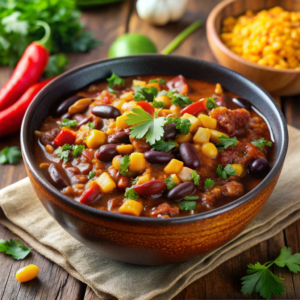
Vegan Gluten-Free Chili Con Carne Recipe
Equipment
- Large pot or Dutch oven
- Wooden spoon or spatula (for stirring)
- Chef’s knife
- Measuring cups
- Measuring Spoons
- Can opener
- Colander (for draining and rinsing beans)
Ingredients
- 1 tbsp olive oil
- 1 large onion diced
- 3 cloves garlic minced
- 1 bell pepper diced (any color)
- 1 medium carrot diced
- 1 celery stalk diced
- 1 can black beans drained and rinsed
- 1 can kidney beans drained and rinsed
- 1 can pinto beans drained and rinsed
- 1 can diced tomatoes 14.5 oz
- 1 cup vegetable broth
- 1 tbsp tomato paste
- 2 tsp chili powder adjust to taste
- 1 tsp ground cumin
- 1 tsp smoked paprika
- 1/2 tsp dried oregano
- 1/2 tsp ground coriander
- 1/4 tsp cayenne pepper optional, for extra heat
- Salt and black pepper to taste
- 1 cup frozen corn kernels
- 1 tbsp maple syrup optional, for a touch of sweetness
- 1 tbsp apple cider vinegar or juice of 1 lime
- Fresh cilantro chopped (for garnish)
- Avocado slices optional, for garnish
- Gluten-free tortilla chips optional, for serving
Instructions
Prepare the Base:
- Heat the olive oil in a large pot over medium heat. Add the diced onion and sauté for about 5 minutes, until translucent.
- Add the minced garlic, bell pepper, carrot, and celery. Sauté for another 5-7 minutes, until the vegetables are softened.
Add the Beans and Tomatoes:
- Stir in the black beans, kidney beans, pinto beans, and canned diced tomatoes. Mix well.
Add the Liquids and Spices:
- Pour in the vegetable broth and add the tomato paste. Stir to combine.
- Add the chili powder, ground cumin, smoked paprika, dried oregano, ground coriander, cayenne pepper (if using), salt, and black pepper. Mix everything together thoroughly.
Simmer the Chili:
- Bring the mixture to a boil, then reduce the heat to low. Cover and let the chili simmer for 30-40 minutes, stirring occasionally. This allows the flavors to meld together.
Add the Final Touches:
- About 10 minutes before the chili is done, stir in the frozen corn kernels and maple syrup (if using). Adjust seasoning with salt and pepper if needed.
- Just before serving, stir in the apple cider vinegar or lime juice for a bright, fresh finish.
Serve:
- Ladle the chili into bowls and garnish with chopped fresh cilantro and avocado slices, if desired.
- Serve with gluten-free tortilla chips for a crunchy accompaniment.

